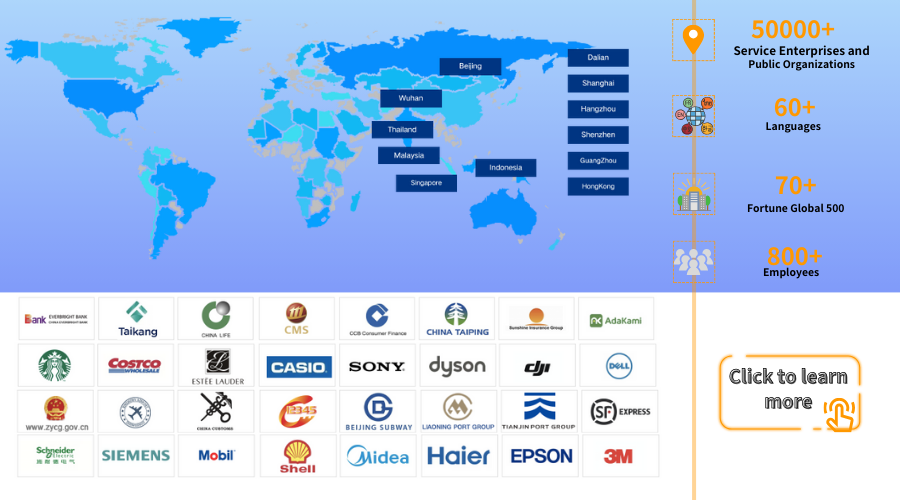Is Insight Tool in Intelligent Customer Service Necessary?
Article Summary:In the field of intelligent customer service, a large amount of data is generated every day. Traditional customer service faces many challenges, not only affecting the operational efficiency of enterprises, but also restricting their ability to stand out in the fiercely competitive market. So, what can we do to ensure that every decision we make is data-driven, thereby improving service quality? This article aims to provide some insights.
Table of contents for this article
We are currently in an era where "data is king," with the volume of data generated daily experiencing exponential growth. It is projected that by 2025, the global data volume will reach a staggering 175ZB. Faced with such vast amounts of data, traditional customer service models are proving inadequate: there are significant issues with information silos, predicting customer behavior is challenging, and service quality varies greatly. These problems not only affect the operational efficiency of businesses but also constrain their ability to stand out in fiercely competitive markets. So, what can we do to ensure that every decision we make is data-driven, thereby improving service quality? This article aims to provide some insights.
In 2022, the market size of the intelligent customer service industry in China reached 66.8 billion yuan. It is expected that as the boundaries of intelligent customer service application scenarios continue to expand to include marketing, sales, and other areas, the market will continue to grow rapidly. By 2027, it is projected to reach a scale of 18.13 billion yuan, with a compound annual growth rate as high as 22.1%. The global scale of intelligent customer service is even larger.
Common Data in the Field of Intelligent Customer Service

Common data in the field of intelligent customer service includes:
- Dialogue Data
This encompasses the conversation records between customers and customer service representatives, which can be real-time or historical. These data are used for training and optimizing dialogue systems, including natural language processing (NLP) models and response generation models.
- User Feedback Data
This includes user feedback on the customer service experience, such as ratings, comments, and so on. These data can be utilized to evaluate system performance and guide system improvements.
- Sentiment Analysis Data
This comprises emotional information from user conversations, such as emotions and attitudes. These data can assist the system in better understanding user emotions and adjusting response strategies accordingly.
- Multilingual Data
If the system needs to support multiple languages, corresponding language datasets need to be prepared. These data include dialogue records, common questions and answers, etc., to ensure that the system can correctly understand and respond to users in different languages.
The Evolution of Intelligent Customer Service Data Analysis
The evolution of intelligent customer service data analysis has undergone a transformation from basic statistical analysis to advanced predictive analysis and now to prescriptive analysis. Initially, the system mainly focused on basic data cleaning and report generation to help businesses review the past and understand the workload and service quality of the customer service team. With the integration of machine learning and artificial intelligence technologies, intelligent customer service began to possess predictive capabilities, enabling it to predict customer behavior trends based on historical data models, guide companies to plan ahead, and optimize resource allocation.
Today, intelligent customer service data analysis has moved towards a higher stage - utilizing cutting-edge technologies such as deep learning and natural language processing (NLP) to achieve precise identification of customer emotions, intent prediction, and personalized recommendations. This means that customer service is no longer just a problem solver, but also a designer of the customer experience, able to provide customized service solutions before customers express their needs, greatly enhancing service proactivity and satisfaction.
Insight Tool: Service Transformation Driven by Data

The functional advantages of insight tool in intelligent customer service can be deeply understood from the following dimensions:
Personalized Service: Through deep learning of customer historical behaviors and preferences, intelligent customer service can provide a personalized service experience for each individual, enhancing customer stickiness and increasing brand loyalty.
Issue Anticipation and Prevention: By analyzing data patterns, intelligent customer service can proactively identify potential issues, intervene in advance, reduce customer complaints, optimize service processes, and improve overall service efficiency.
Resource Optimization: Data analysis helps enterprise management clearly understand the workload and efficiency of the customer service team, allocate manpower resources reasonably, reduce operational costs, and also identify training needs to enhance team professional capabilities.
Strategic Decision Support: Accumulated customer data can provide scientific basis for enterprise market strategies and product development, helping enterprises accurately grasp market trends, achieve precision marketing, and product iteration.
Real-time Data Monitoring, Clear Insight into Business Trends:Real-time monitoring of data business information enables knowing what happened in the last second in the next second.
Scheduled Data Push, Achieving Data Sharing:Supports establishing scheduled sharing, enabling reports to be sent to designated emails on schedule, and dynamic time setting for charts/dashboards, automatically updating based on time conditions.
Udesk’s Insight Tool, Your Best Partner
-Is Insight Tool in Intelligent Customer Service Necessary?
-Of course, it is!

As enterprises undergo digital transformation, it is crucial to use data-driven insights to address real-world challenges. By leveraging data, businesses can gain insights into users' preferences across various channels, such as which types of customers prefer using mobile banking, WeChat banking, web pages and other multimedia channels at different times of the day. By analyzing customer service data, companies can identify inefficiencies and improve service quality. Similarly, by analyzing management data, enterprises can mitigate risks around public sentiment, complaints, and regulatory compliance.
Among numerous insight tools, UDESK is highly regarded by many enterprises. It can bring more business value and insights to enterprises, enhance competitiveness, and achieve sustainable development.
Transform your customer service strategy with Udesk's Insight - harness the potential of data analytics to optimize operations, enhance customer satisfaction, and stay one step ahead in today's competitive landscape.
》》Click to start your free trial of Insight, and experience the advantages firsthand.
The article is original by Udesk, and when reprinted, the source must be indicated:https://www.udeskglobal.com/blog/is-insight-tool-in-intelligent-customer-service-necessary.html
Data-driven Customer Service TeamInsight ToolUdesk's Insight

 Customer Service& Support Blog
Customer Service& Support Blog



